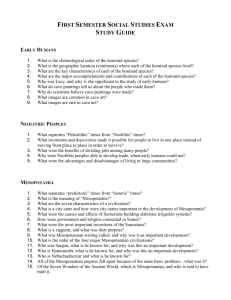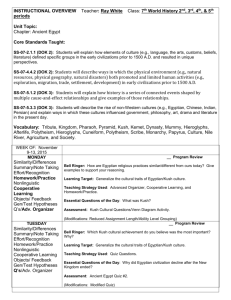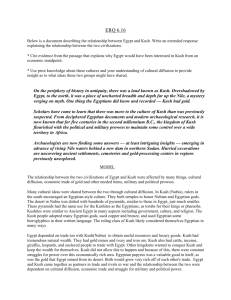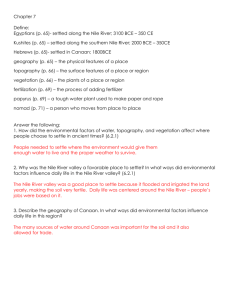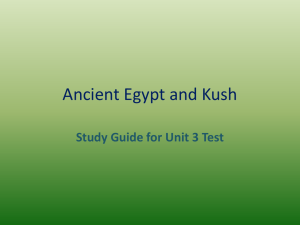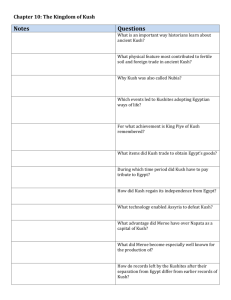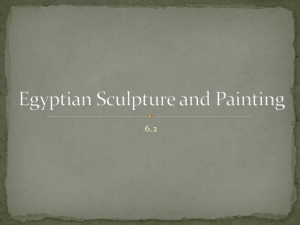Ancient Egypt and Kush
advertisement
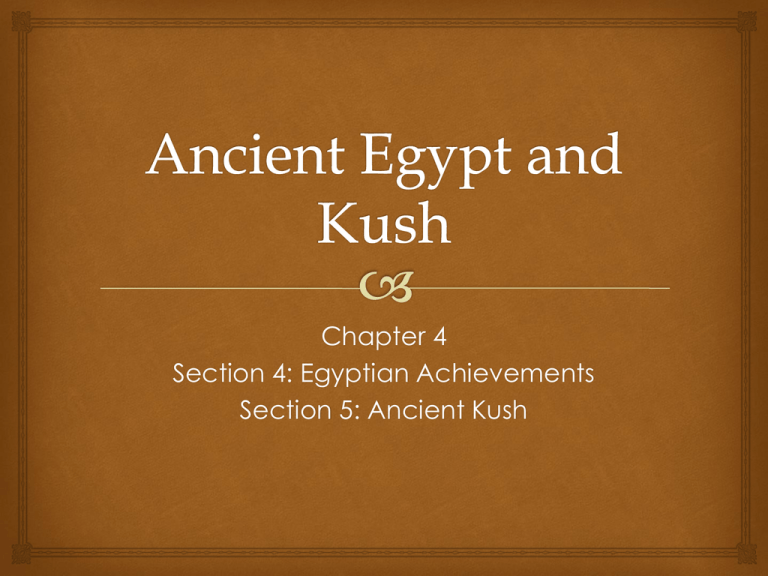
Chapter 4 Section 4: Egyptian Achievements Section 5: Ancient Kush In this this activity, use the symbol translation chart to decode the message. For centuries archeologists and historians had very little understanding of Egyptian HEIROGLIPHICS, an ancient Egyptian form of writing with symbols. It was not until 1799 with the discovery of the Rosetta Stone that archeologists finally had a tool to translate these symbols into a language they could understand. A 6 B B C C D D E E F F J J K K L L P Q Q R R X x G G H H I M M N N O O P S S T T U ; V . Y ] Z * I W [ Egyptian Achievements Hieroglyphics: the Egyptian writing system Papyrus: long lasting paper Egyptian Achievements: Writing The Rosetta Stone: a stone inscribed with hieroglyphics that made it possible for us to translate them. It also included Greek and a later form of written Egyptian. Scribes: The few Egyptians who knew how to write Egyptian Achievements: Temples Tombs and Art Pyramids Sphinx Obelisk Trivia: Where can you find an obelisk in America? The Impact of Egyptian Achievement Trivia Question Answer: Washington D.C. Egyptian Achievements: Art Painting styles (tombs, portraits, scenery) Stone work Jewelry (necklaces, collars, and bracelets) Let's Take a Tour! Ancient Egyptian Tombs Google Earth: Tutankhamon's tomb 3D Ancient Kush The Kush were a group of people who lived south of Egypt We now call this region Nubia Kush farmers lived off of the Nile Capital: Kerma Cataracts: Rapids on Nile that protected the Kush The Kush Come to Power Piankhi(Pyang-eee) One of Kush's most successful military leaders that would eventually conquer all of Egypt At first the Kush and Egyptians ware trade partners 1500 BC Egypt took over Kush The Kushite Dynasty: Then Kush rose back to power and ruled over Egypt Focus question: What does Assimilation mean? Kushite Culture Very similar to Egyptian Culture due to assimilation (temples, tombs, gods) Queens were often rulers of Kush society Kush decline in the 300s AD Ancient Kush Summary

